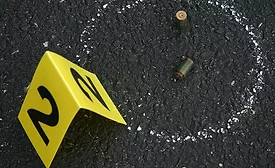Home » Keywords: » security intelligence
Items Tagged with 'security intelligence'
ARTICLES
Why Comprehensive Collection is Critical for Ballistics Analysis
A policy on comprehensive collection of cartridge casings can help police connect violent crimes and close more cases
April 24, 2018
Sign-up to receive top management & result-driven techniques in the industry.
Join over 20,000+ industry leaders who receive our premium content.
SIGN UP TODAY!Copyright ©2025. All Rights Reserved BNP Media.
Design, CMS, Hosting & Web Development :: ePublishing














